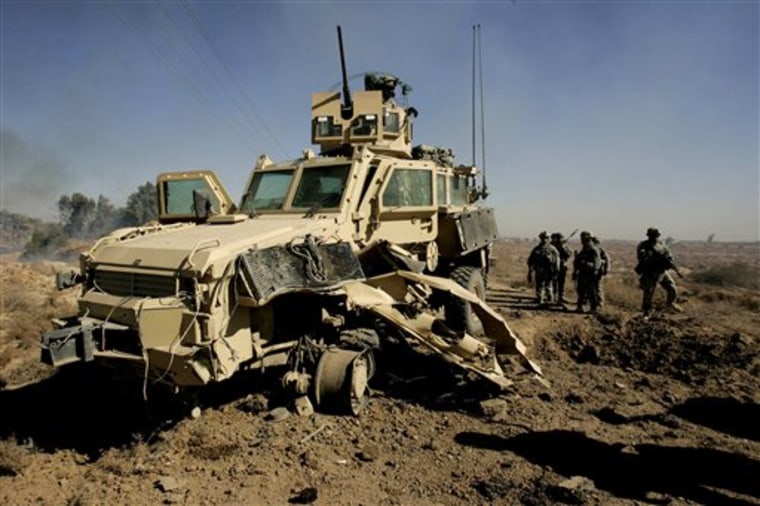For the first time since the end of the Cold War, the Army is updating its plans for electronic warfare, calling for more use of high-powered microwaves, lasers and infrared beams to attack enemy targets and control angry crowds.
The new manual, produced at Fort Leavenworth and set for release Thursday, also is aimed at protecting soldiers against remote-controlled roadside bombs and other nontraditional warfare used by increasingly sophisticated insurgents.
"The war in Iraq began to make us understand that there are a lot of targets that we should be going after in the offensive or defensive mode to protect ourselves," said Col. Laurie Buckhout, chief of the Army's electronic warfare division in Washington, D.C.
The 112-page manual, a copy of which was obtained by The Associated Press before its release at the Association of the United States Army meeting in Fort Lauderdale, Fla., doesn't offer specifics on new equipment or gadgetry but lays out in broad terms the Army's fear that without new equipment and training, U.S. forces may be at a deadly disadvantage.
The Army has let its electronic warfare capabilities lapse since the early 1990s, when nascent insurgencies were less sophisticated and less deadly. Army patrols currently rely on specially trained Air Force and Navy members whose electronic expertise helps sniff out IEDs, which have killed more than 1,700 U.S. troops since the war began.
The Air Force and Navy been urging the Army to develop its own capabilities, and the Army sees the need for a new system more finely tuned to its purposes. Buckhout said using Air Force or Navy systems — such as aircraft that send jamming signals to thwart an IED from 30,000 feet — is like going after "a mosquito with a sledgehammer."
"You may get the mosquito, but you're going to cause a lot of other effects with that sledgehammer," such as inadvertently jamming police radios or other friendly devices, she said.
Distinguishing friend from foe
The new doctrine directs the Army, which has put a premium on fighting insurgents in Iraq's most populous cities, to use technology that can distinguish enemy threats from common technologies such as radios or cell phones used by civilians or friendly forces.
Among the first tangible changes: The Army is in the process of training 1,500 soldiers and officers in electronic warfare at Fort Sill, Okla., by September 2010, giving the military its largest electronic warfare cadre.
The cost to implement the doctrine is unclear. Army officials say funding for development and training will likely come from internal budget shifts, though they don't rule out asking Congress for money down the road.
Roadside bombs weren't seen as a top threat when U.S.-led forces invaded Iraq in 2003. But insurgents, resigned to losing head-on fights with American troops, increased their use of the devices and changed the dynamics of the war.
IEDs are assembled from a variety of explosives, such as plastics or mortar shells, then detonated with a radio signal. In many cases, an IED explodes beneath a vehicle when the bomb is literally called by an insurgent.
The ease with which IEDs are built has a sparked urgency for the Army's new effort. Also, developing the doctrine and training soldiers positions the Army to adapt to changing technologies and streamline its approach by reducing reliance on other branches, officials say.
"We had this capability since we had radios but let it lapse," said Lt. Col. Fred Harper, capabilities manager for the Army's computer network and electronic warfare activities. "We didn't have (an enemy) that had the capabilities. That whole environment has changed."
Barry Watts, a senior fellow with the Center for Strategic and Budgetary Assessments in Washington, said the Army is smart to develop its own electronic warfare capabilities but questions how fast the service can get up to speed, "Especially when they have been out of it for a long time."
